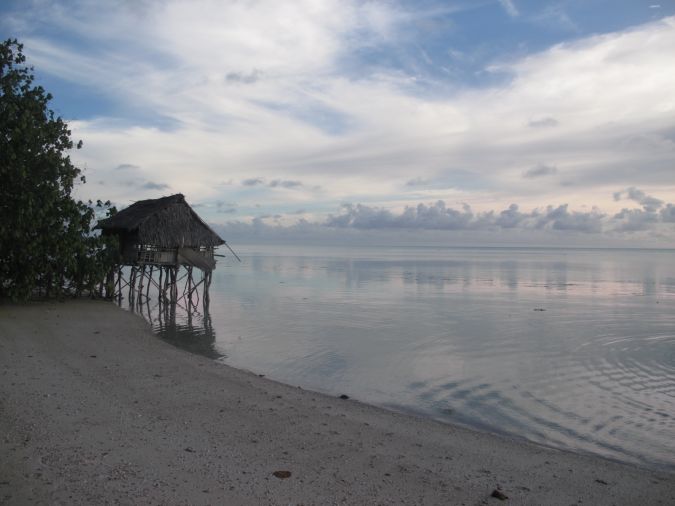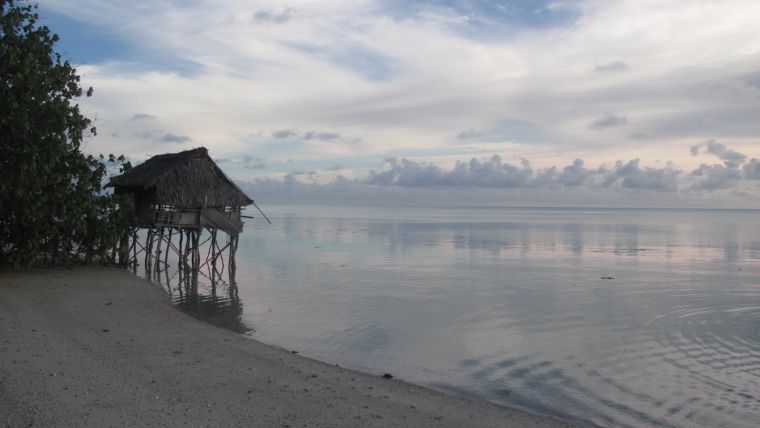Navigating the rising tide
Experts are extremely concerned about the temperature of the Pacific Ocean, as the sea surface temperature this year was the warmest since satellite measurements began. This can have major consequences: for marine life, for example, but also for our climate, because a warmer ocean absorbs less CO2. The ocean absorbs almost a quarter of all the CO2 we emit, something not everyone is aware of. People know of the role of the large tropical rainforests such as the Amazon, but our oceans are just as crucial. If the water absorbs less CO2, more remains in the atmosphere, driving climate change further, also on land.
Rising sea levels caused by climate change also pose major problems, and low-lying coastal areas around the world, home to many metropolises, will face major challenges in the coming century. The prospects for small islands in the Pacific Ocean are dramatic: they have a high chance of being the first to disappear due to the consequences of climate change.
Kiribati, a very remote archipelago in the South Pacific, is one such collection of small islands. Earlier this year, Maarten van Aalst, chief director of the KNMI (Royal Netherlands Meteorological Institute) and professor on climate and disaster resilience at the University of Twente, talked about his visit to Kiribati back in 2002: “On landing, when I looked at the coastline from above, I saw the vulnerability of the archipelago. On the island itself, I also saw that the threat did not only come from the slowly rising sea level, but that there were also periods of water scarcity, partly due to longer droughts and a growing population.” In Kiribati, Van Aalst came face to face with the risks of climate change. Now, over 20 years later, our knowledge of climate change and its far-reaching consequences for our living environment has increased significantly. Climate change affects everyone, and therefore many disciplines, including our own: hydrography. This is why we pay regular attention to the impacts of climate change on the hydrographic sector, and how the sector can help combat its consequences.
In the September/October 2023 edition of Hydro International, we zoom in on the impacts of climate change as experienced in Kiribati. The article is about how our field contributes to providing a future in challenging times. The hydrographic surveys described are not merely technical exercises, but vital tools that inform strategic decisions affecting the safety and economic well-being of Kiribati. In an era of environmental challenges and economic uncertainties, Kiribati demonstrates how targeted investments in maritime infrastructure can yield significant benefits. Comprising 33 atolls and coral islands in the Central Pacific, Kiribati is highly vulnerable to climate change and sea-level rise due to its low-lying geography. While its remote Outer Islands offer untouched natural beauty, limited trade opportunities hinder economic growth. To address these challenges, the Kiribati Outer Islands Transport Infrastructure Investment Project (KOITIIP) is conducting hydrographic surveys, aerial imagery, Lidar and other data collection methods to enhance maritime safety and support economic growth in Kiribati.
Kiribati certainly does not stand alone, in fact it is a symbol – just like Tuvalu, for example, 3,000 kilometres away – of the consequences that rising sea levels can have. At Hydro International, we will pay continued attention to the issue outlined in this editorial; we simply cannot avoid it.


Value staying current with hydrography?
Stay on the map with our expertly curated newsletters.
We provide educational insights, industry updates, and inspiring stories from the world of hydrography to help you learn, grow, and navigate your field with confidence. Don't miss out - subscribe today and ensure you're always informed, educated, and inspired by the latest in hydrographic technology and research.
Choose your newsletter(s)
























